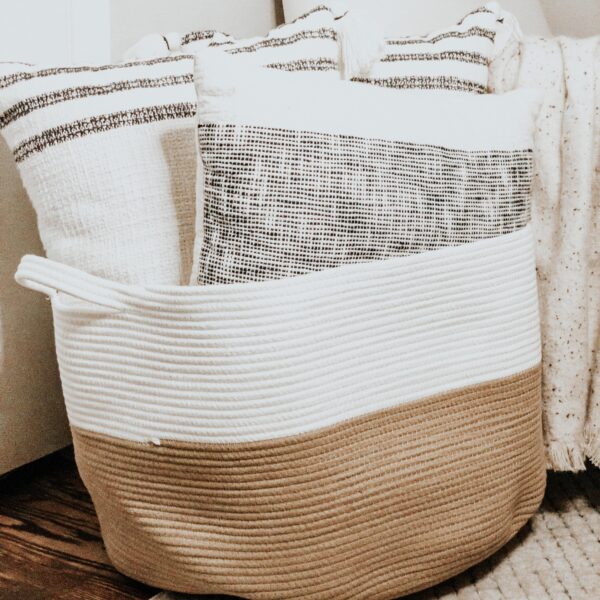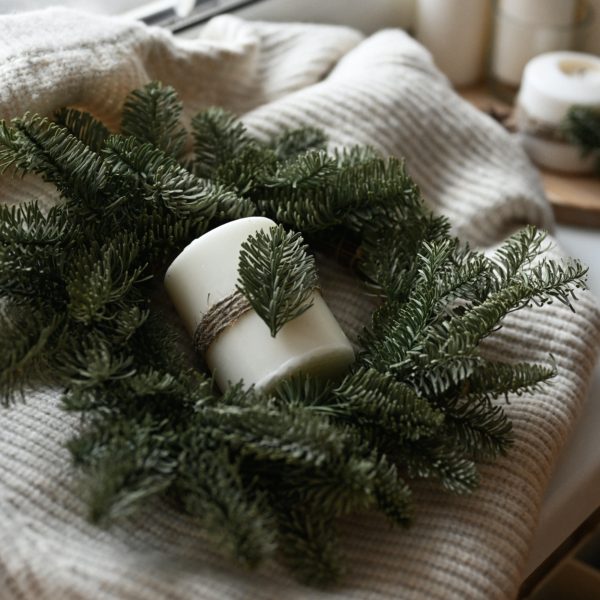Do you remember when you lived at home with your parents and they told you that you couldn’t paint an accent wall in your bedroom and you were devastated? I get it! When I moved out, I couldn’t wait to start decorating my place like I wanted to! Fast forward, a couple of years, and my husband and I moved into together. He is a video game engineer and loves video games. They are his passion. You can imagine the posters. So I’m guessing that you’re going to ask, “How did you combine your design styles?” Well, I’m sharing eight tips on how to combine your interior design style with your partner’s style!
When it comes to combining design styles, Communication is Key
Open and honest communication lays the foundation for a successful design collaboration. Before embarking on the journey of merging design styles, open communication is crucial. Sit down with your partner to discuss each other’s preferences, must-haves, and deal-breakers. Take this quiz to learn about your unique interior design style! Understanding each other’s tastes and visions will help create a shared vision for your home. Having these discussions will not bring you closer but you can then prioritize and create realistic expectations, fostering a collaborative and inclusive approach to design decisions.
Identify Common Ground
Look beyond surface differences and identify the common elements and underlying themes that resonate with both partners. Whether it’s a particular color palette, a shared love for natural materials, or a shared appreciation for a specific era, identifying common ground provides a foundation for a unified starting point for the design process.
Create a Mood Board Together
To visually represent your combined styles, create a mood board together. Building a mood board collaboratively not only serves as a visual guide but also strengthens the sense of teamwork in the design process. Gather images, colors, textures, and patterns that appeal to both of you. Discuss the significance of each chosen element, ensuring that the final mood board reflects a cohesive blend of both personal styles. This collaborative effort will help solidify your shared design aesthetic and serve as a reference point and will ultimately, bring you closer to your shared vision!
When it comes to combining design styles, Compromise Where Necessary
Inevitably, there will be areas where your styles differ. However, successful design collaborations often involve compromise. Embrace compromise and find middle-ground solutions that satisfy both parties. Whether it’s selecting a neutral base and incorporating pops of individual flair or compromising on specific furniture pieces, or decor accessories, compromise is key to a successful design collaboration. This flexibility ensures that the final design is a true representation of both partners’ tastes.
Define Separate Spaces
Sometimes, it’s beneficial to designate specific spaces where each partner’s style can shine. This approach provides a sense of autonomy while still contributing to the overall cohesiveness of the home. For example, if one person loves bold, vibrant colors and the other prefers a more neutral palette, consider assigning certain spaces to each style. This allows both individuals to express themselves in their designated spaces. It’s a thoughtful way to respect and celebrate each person overall contributing to the growth of your relationship.
Blend Styles with Transitional Pieces
To seamlessly merge each person’s design styles, invest in transitional pieces that bridge the gap between different aesthetics. Transitional pieces act as the bridge between different design styles, seamlessly integrating diverse elements. These versatile items can tie together disparate elements, creating a cohesive look. For instance, a neutral-toned sofa can serve as a backdrop for eclectic throw pillows that represent both design styles. These pieces serve as anchors, harmonizing the overall look of the space.
Opt for Timeless Design
When in doubt, lean towards timeless design elements that withstand evolving trends. Timeless interior design choices provide a neutral backdrop to build out your overall design concept. Neutral color schemes, classic furniture pieces, and timeless accessories provide a solid foundation that can easily accommodate various design preferences over time. This approach ensures that the home remains stylish and adaptable over time.
DIY Projects
Embrace do-it-yourself (DIY) projects as a way to infuse both personal styles into your home. DIY projects offer a hands-on way to infuse personal touches into the home. Consider creating custom art, reupholstering furniture, or repurposing decor items to reflect your joint creativity. These creative endeavors strengthen the collaborative spirit. The result in the unique, handmade pieces become cherished elements that reflect both partners’ personalities.
In conclusion on combining design styles,
Whether you’re taking on a roommate or moving into a new place with your significant other, combining different styles can be challenging — especially when the people involved have strong opinions. But some of the most interesting spaces, designers say, integrate a variety of influences. Integrating your interior design styles with your partner’s is an exciting journey that can strengthen your bond and create a home that truly feels like a shared sanctuary and reflects your shared life together! If you need help with this, I’d be happy to have a design consultation with you! Schedule a free call with me today!





Leave a Reply